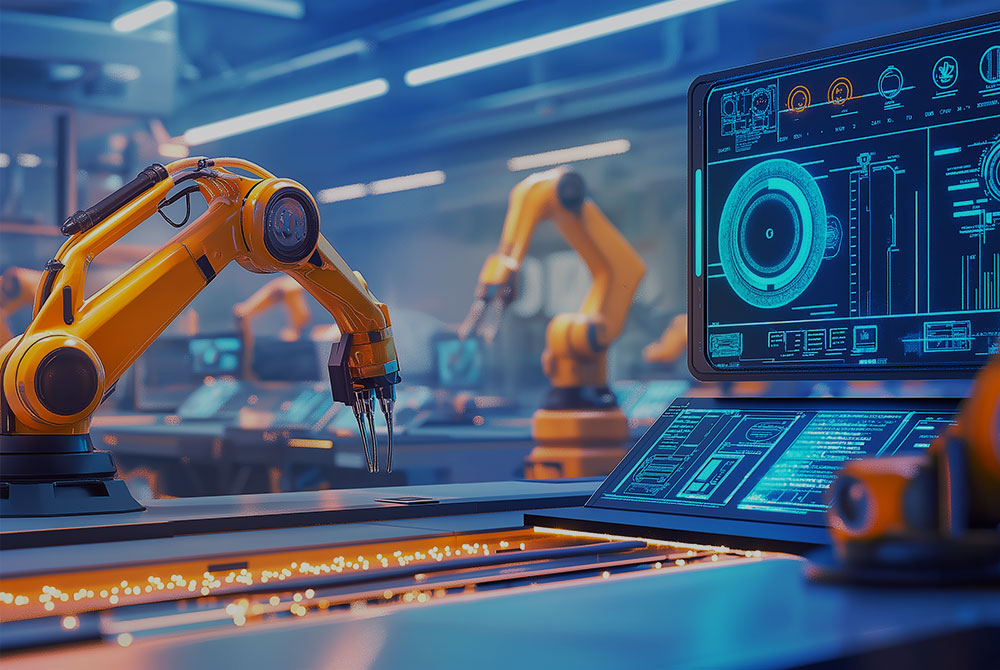When we are teaching children to recognize objects, we use repetition. To teach what a car is, we may show children multiple images of different cars, make car noises, and repeat the word “car” over and over. Through observing the common patterns and details we teach, children learn to associate a label — “car” — with the object. Now, artificial intelligence is helping machines to learn in much the same way as humans do.
Thanks to what is known as “deep learning,” AI-powered machines are mimicking the human brain. But machines still have to be “taught” to think on their own. A combination of complex algorithms and massive computing power helps computer scientists create artificial neural networks that can recognize patterns in digital representations of sounds and images.
Last year, according to MIT Technology Review, a research team led by Stanford University’s Andrew Ng and Google’s Jeff Dean reported that a machine using an artificial neural network, powered with more than 1 billion connections, had successfully identified objects that had not been labeled by humans. The deep-learning system was able to learn how to correctly identify flowers, cats, and other images — on its own. Demonstrating that an artificial neural network could train itself to recognize complex patterns was a major accomplishment for deep-learning developers.
“The goal of automating machine learning is to develop techniques for computers to solve new machine-learning problems automatically, without the need for human machine-learning experts to intervene on every new problem,” says Jeff, a senior fellow with Google’s Brain Team.
Among the most promising AI technologies under development are generative adversarial networks (GANs), a class of algorithms used in unsupervised machine-learning applications.
“GANs are truly one of the biggest breakthroughs of the past few years,” says Anil Kamath, fellow and vice president of technology at Adobe. “Instead of a machine learning from data that you provide, it’s actually capable of creating things that you didn’t tell it about. So, for example, you can sketch something, and the machine will figure out how to make it look like a real image.”
Can machines be curious?
Another team of researchers is working on how to make machines “curious,” by teaching them to play games. Computer scientists at the Berkeley Artificial Intelligence Research Lab at the University of California, Berkeley, reported success in developing a machine that plays Super Mario Bros., a 1980s-era video game.
A project demo shows how sophisticated machine-learning algorithms help a machine teach itself how to play the game. “You can think of curiosity as a kind of reward which the machine generates internally on its own, so that it can go explore more about its world,” says Pulkit Agrawal, one of the Berkeley team members, in a recent Wired article.
The approach taken by the Berkeley researchers, according to Wired, reflects how humans learn. In a research paper published last year, the Berkeley team explained how they are using curiosity “as an intrinsic reward signal to enable the machine to explore its environment and learn skills that might be useful later in its life.” In other words, they are teaching the machine to view curiosity as its own reward, to be motivated not solely by external rewards, like points in a game, but also by the opportunity to have a new experience.
The Berkeley team has taken the concept of curiosity and defined it in the context of a machine’s ability to predict the consequence of its own actions through trial and error. Remarkably, their work shows a machine learning by doing. Because there are no external rewards, the researchers note, “An agent’s intrinsic curiosity guides it to explore and learn about its environment.”
Is AI making us smarter, or more complacent?
One promise of smart machines is to improve the speed and efficiency at which humans can complete tasks and analyze outcomes. Increasingly powerful machines can accomplish tasks, such as data analysis, in seconds that could take humans days, weeks, or years to complete.
“AI has the potential to change everything, from the simple abilities of classifying data in categories, finding patterns and differences in large amounts of data, to making decisions and evolving,” says Jordan Nguyen, who has a doctorate in biomedical engineering, and is a technology futurist and inventor. “There’s no doubt AI will impact every sector we can think of.”
Jordan believes that AI applications will drive automation that can free up humans to focus more on creativity, innovation, and critical thinking. “If we open our minds, of course not without caution, to the possibilities that AI can bring, maybe we can realize some of the incredible problem-solving potential we have at our fingertips,” he says.
While AI can augment productivity, John Bates, director of product management for Adobe Analytics, isn’t convinced that it will make humans smarter. “I don’t know if it will necessarily increase our intelligence,” he says, “but I think it will put our intelligence to work on more important things that I believe we, as humans, are relatively better at than machines.”
There are key differences between how machine-learning algorithms work and how the human brain functions, adds John. For example, machines can’t extrapolate based on new information as well humans can.
When it comes to how AI affects humans, it’s more about enhancing intelligence than increasing smarts. “I truly think of it as a partnership between what humans can do and what machines can do, in a way that makes the whole thing greater than the sum of the parts,” says Anil.
Should we be threatened by AI?
While science fiction often depicts a dystopian future filled with robots gone rogue, the reality is much more nuanced.
Whether or not AI will increase human complacency remains to be seen. Some early evidence suggests the need for vigilance in monitoring the effects of technology on the way people think and learn. Other conclusions center on the need to rethink how we teach and learn as we adapt to new technological standards.
In fact, the emergence of AI as a learning tool may be just another application of an emerging technology poised to reshape the ways in which humans interact with machines — and each other.
“AI as a technique will become even more ubiquitous than it is right now,” says Lars Trieloff, principal manager for Adobe’s European team. “A lot of discussions that we’re having today about AI are going to go away. While you and I might be surprised that we can actually talk to our phones, for my children, talking to Alexa, and playing games with her, has been the most natural thing in the world.”
Ultimately, says Lars, AI promises to be a means for pushing the limits of human intelligence. “When the novelty wears off, this is where you suddenly come to the really, really interesting applications,” he says. “This is where we stop treating AI as something special, and start viewing it as just another tool in our tool belt.”
Read more about our future with artificial intelligence in our AI page





